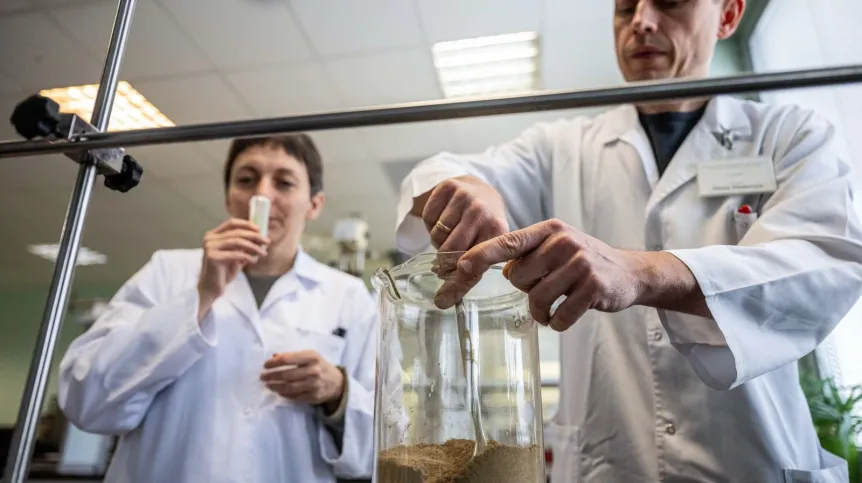
Researchers from the Wrocław Medical University are the first in the world to have faithfully recreated Theriac, a medicinal hit in Europe from antiquity to the 18th century, consisting of 71 substances. It turns out that it was closer to a placebo than to the miraculous mixture that ancient medics believed it to be.
As part of the project it was necessary to review old Polish diaries, letters, and private notes of pharmacists available in the archives to find the recipes. This part of the project was handled by the team from the Historical Institute of the University of Wrocław under the supervision of Dr. Jakub Węglorz. The reconstruction and subsequent analysis of the recreated drug was the task of researchers from the Department of Pharmacognosy of the Wrocław Medical University, led by Dr. Danuta Raj.
„Muszę przyznać, że było to trudne. Pierwsza podstawowa trudność polegała na tym, że było w nim aż 71 składników. Część z
'I must admit it was a difficult project. The first main difficulty was that there were as many as 71 ingredients. Some of them, such as ginger or black pepper, were not problematic for us,' says Dr. Raj.
Vipers - the main ingredient of Theriac - turned out to be a problem. 'We managed to ensure that no vipers had to be killed for the purposes of our project. We only used those that had not survived in the natural environment,’ says Raj.
She adds that importing other ingredients, some from Asia or Africa, required a lot of creativity. The researchers were aided by filmmakers who brought lemongrass, and bloggers and missionaries who helped bring other ingredients.
Wrocław pharmacists based the reconstruction of Theriac on the recipe of a licensed pharmacist from Toruń, written down in 1630. The practical use of that recipe was historically confirmed during the plague epidemic.
According to Dr. Raj, Theriac does not work as well as people expected in ancient times or even four hundred years ago, when it was extremely popular and expensive.
'At that time, it was believed that the drug protected against poisoning and diseases, including epidemics, and that it was a very potent drug. It was feared and the dosage was very precise. It was known that, for example, it could not be used in fevers, because it could lead to death. We absolutely do not confirm this,’ says Dr. Raj.
She adds that studies have shown that the drug is closer to a placebo than to the powerful mixture that people believed it to be in the past.
Since ancient times, it had been recommended as an antidote to poisoning, but during epidemics its importance became special - it was believed to protect against illness and death. Only a few could afford it during the epidemic because it was very expensive. Only licensed pharmacists were involved in its production. The most valued version was the Venetian Theriac, because its recipe was considered exemplary. Thanks to the licensing system, the production of the drug spread also in Poland.
Theriac has already been the subject of research by modern scientists, but the team from the Wrocław Medical University is the only one in the world to have recreated it faithfully, one to one, in accordance with the historical procedures. The researchers presented the results of their work at an international conference organized by the University of Wrocław at the Museum of Pharmacy at the Wrocław Medical University on March 8-10. The invited guests included reconstructors of ancient medicines, alchemical processes and craft products, including fabrics and sweets who came to Wrocław from all over the world, including the USA, Netherlands, Norway, Sweden, the UK, Germany, Austria and Israel. (PAP)
PAP - Science in Poland, Roman Skiba
ros/ apiech/ joz/ kap/
tr. RL













